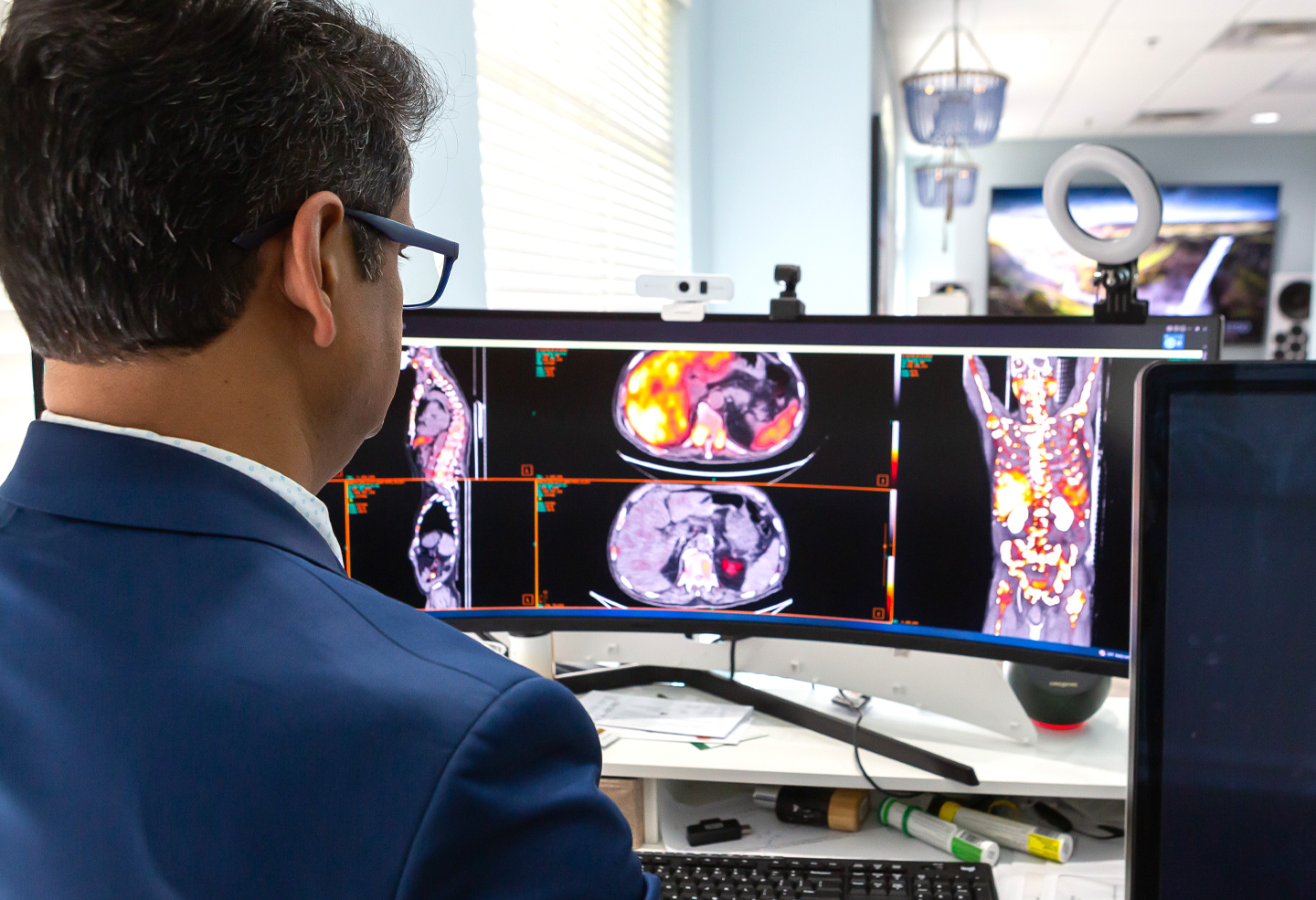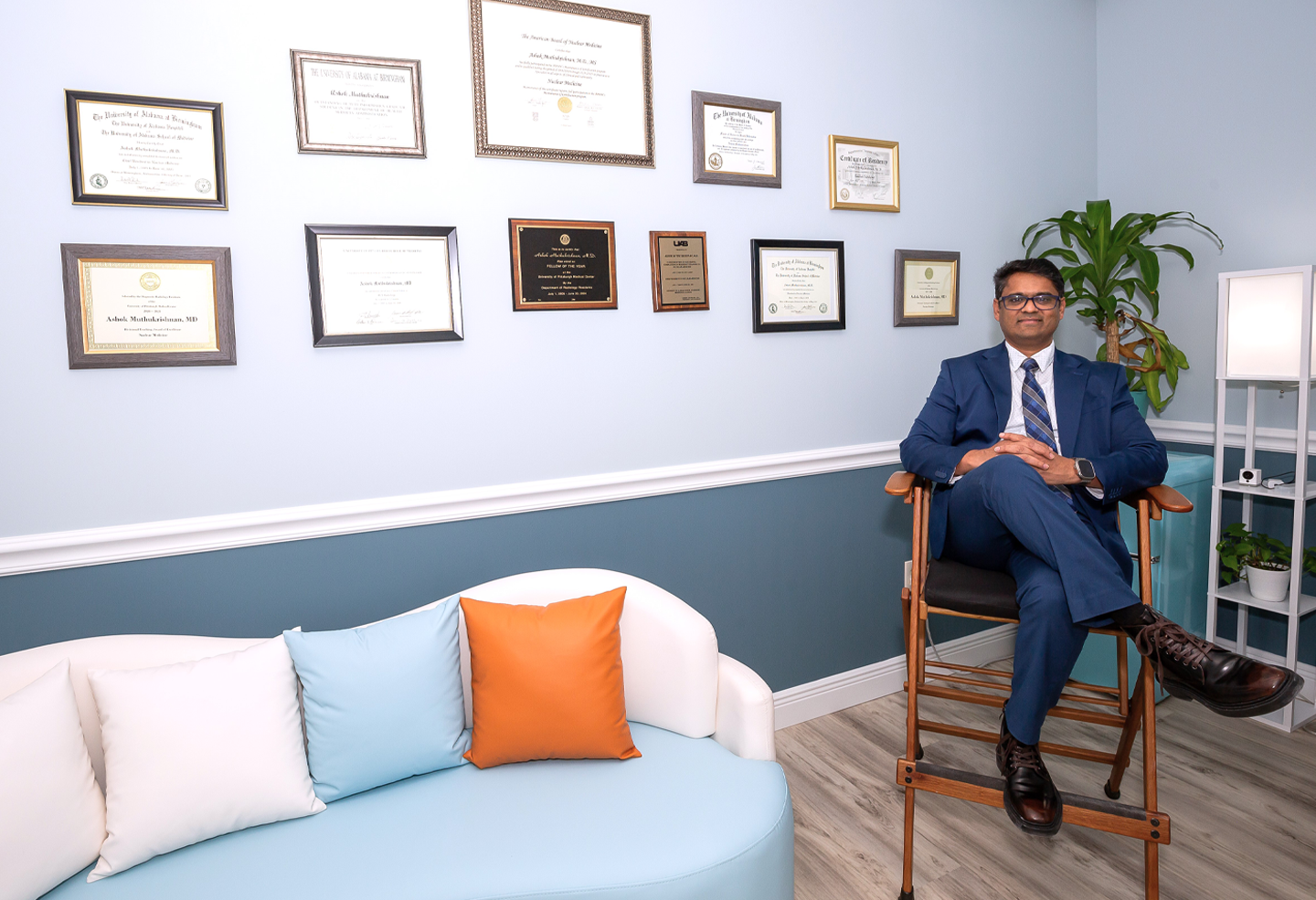Meet the man behind the state-of-the art molecular imaging center–Florida Theranostics
Florida Theranostics is an independent medical facility specializing in theranostics, with a focus on cutting-edge radioligand therapies and molecular imaging for cancer. Hermia plays a key role in integrating all the scanners and serves as a trusted partner in enhancing quantification processes and optimizing workflows.
Could you briefly introduce yourself and Florida Theranostics?
My name is Dr. Ashok Muthukrishnan. I am the founder and chief physician at Florida Theranostics. At Florida Theranostics, we’re proud to be one of the leading providers of radioligand therapies in South Florida, offering advanced and targeted treatments. To expand our capabilities, we’ve recently installed state-of-the-art SPECT/CT and PET/CT scanners. These advanced systems enable us to perform high-level molecular imaging for our community—ranging from comprehensive cancer imaging to assessments for neurologic conditions such as Alzheimer’s and Parkinson’s disease.
How do you see nuclear medicine and molecular imaging evolving in the next 10 years?
Over the next decade, we’ll see significant expansion in theranostics, enabling increasingly personalized and precise diagnostics and treatments across a broader spectrum of diseases. Applications will likely go beyond oncology, including novel alpha-emitting radionuclides.
This evolution will be accelerated by the integration of artificial intelligence and machine learning, transforming image analysis, workflow efficiency, and predictive analytics. Advances in imaging hardware, such as the adoption of total-body PET systems and enhanced SPECT/CT, alongside the development of novel radiopharmaceuticals targeting new biological pathways, will open new diagnostic and therapeutic frontiers. Together, these innovations will help nuclear medicine become a cornerstone of personalized healthcare.
What are your goals at your center?
Our short-term goals focus on optimizing patient experience and safety, improving operational efficiency, strengthening relationships with referring physicians, and investing in ongoing staff development.
Long-term, we aim to adopt emerging technologies such as AI, lead in research and innovation, potentially establish academic and training programs, and ensure sustained financial health and growth. This approach balances immediate high-quality care with future-forward leadership in personalized theranostics and molecular imaging.

What does patient-centered care mean to you?
Patient-centered care means placing the individual at the heart of all decisions, respecting their unique needs, values, and preferences. It involves transparent communication, active involvement of patients and families in care planning, emotional and physical support, and coordinated, accessible services. At its core, it’s about treating the whole person and fostering a compassionate, collaborative care experience.
Are you happy to see theranostics taking more of a spotlight in recent years?
Absolutely, it’s an exciting and encouraging development in healthcare. Theranostics represents a major leap in precision medicine, offering highly targeted diagnosis and therapy with fewer side effects and improved outcomes. Its personalized approach, matching patients to therapies via specific molecular markers, minimizes unnecessary treatments.
The field is also growing rapidly beyond current cancer indications and is evolving alongside AI and advanced imaging technologies, promising even more sophisticated care in the future.



